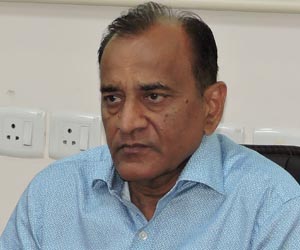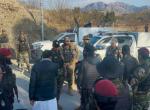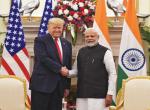Union Minister for Home Affairs Amit Shah told the Rajya Sabha in the ongoing session of Parliament that the Government would conduct a pan-India exercise to prepare a National Register of Citizens (NRC). His remarks have drawn criticism from opposition parties on various grounds, primary among them being two. First, they say that the government’s purpose is to target a particular section of the minority community by getting them excluded from the list. And second, they point to the controversy-ridden NRC preparation in the State of Assam — with even the ruling Bharatiya Janata Party-led government there picking holes in it.
It is true that the NRC ran into problems in Assam, with many anomalies emerging. It seems that bona fide citizens were left out of the list. There were also questions on the kind of documentation that the authorities demanded from the residents. This is the reason why the Home Minister has stated that the NRC process would be taken up afresh in the State (when the exercise is done for the rest of the country). He also sought to dispel the apprehension that a certain minority community would be adversely affected, pointing out that the aim was to identify and weed out non-citizens.
It is important to view the NRC from a non-partisan and non-political perspective. In early November this year, then Chief Justice of India, Ranjan Gogoi said that the NRC of Assam was a “base document for the future” and an attempt to “update the 1951 NRC”. He pointed out that “what had affected Assam and its population the most is the issue of illegal migration, which has come to dominate not only all aspects of life in Assam but also all narratives emanating from it”. Justice Gogoi also lashed out at “arm-chair commentators” for their “distorted” reporting on the issue.
The present ruckus over the preparation of NRC would lead one to believe that the matter has only now surfaced, but in reality it is decades old. The first NRC for Assam was prepared 68 years ago, on the heels of Census 1951. Then too — and now — the chief purpose was to check the illegal flow of migrants into the State. Less than three decades later, the anti-foreigners’ movement erupted in the State. In January 1980, the All Assam Students Union (AASU), spearheading a drive to identify and expel foreign nationals, submitted the first of its many memorandums demanding an updation of the NRC. Pursuant to this campaign and in the backdrop of growing violent protests across the State, the historic Assam Accord was signed, with the Government of India being one of the stakeholders. Among other things, it had a proviso to update the NRC.
Five years after the accord was inked, the AASU submitted to the Centre as well to the State government modalities for the updation. However, the matter did not move with much speed, and it was only in 1999 that the Centre took a formal decision to revise the citizens’ register as per the Assam Accord. However, the modalities remained to be fully accepted. In May 2005, then Prime Minister Manmohan Singh chaired a tripartite meeting of the Union government, the State regime and the AASU, and a broad understanding was reached to take all the necessary steps — including finalising the modalities — to implement the proviso in the Assam Accord.
While the government machinery proceeded with its trademark creaky pace to execute the understanding reached, a non-governmental organisation (NGO) called Assam Public Works, approached the Supreme Court in July 2009, with a plea that the non-documented migrants in the State be removed from the voters’ list. It was now the turn of the judiciary’s slow reflexes to be on display: it was only in August 2013 that the apex court began to hear the petition. By the year-end, the court directed that work to update the NRC should begin. It took a little over one year for the Government to initiate the process — in fact it began doing so almost at the same time when the deadline the court had set for completion of the process, arrived!
It was in December 2017 that the first draft list of the NRC was published. Six months later came the second draft list, which set off a chain of controversies that have refused to die down to this day. Of the 3.29 crore people who applied for inclusion, 40 lakh were excluded. Many of them cried foul and claimed they were genuine citizens of the country. They also expressed apprehension that they would be left out from the government’s social welfare net or be debarred from voting. The apex court made it clear that those excluded would not be deprived since the draft list was not final. Meanwhile, political parties had got into the act, further muddying the waters. In the midst of the raging debate, the government missed the July 31, 2019, deadline for publishing the final draft; it did so in August 31, and over nine lakh people found themselves out of the NRC. The massive exclusion triggered protests from various political parties, including the ruling combine in the State, leading the Centre to clarify that a fresh NRC would be prepared.
But more than this promise is Amit Shah’s declaration of a nationwide NRC that has drawn flak. His critics say that the unique factors of Assam (which prompted the court to order and monitor the NRC) do not exist in the rest of the country. Besides, according to them, there already are established mechanisms to identify non-Indians elsewhere and weed them out. Critics are also apprehensive of the procedure the Centre would adopt, since it is more or less certain that the Assam model would not be replicated. Moreover, for all its faults, the Assam exercise was at least under the apex court’s supervision while the all-India process need not necessarily be.
Rivals of the Modi-led Government are not viewing the NRC in isolation; they have clubbed it with the Centre’s desire to amend The Citizenship Act, 1955, in order to provide Indian citizenship to those Hindus, Sikhs, Buddhists, Jains, Parsis and Christians who came to India before December 31, 2014, wanting to escape religious persecution in countries such as Pakistan, Bangladesh and Afghanistan. The critics’ problem is that the amendment shuts the doors on Muslims, just as the NRC in their view discriminates against the Muslims.
A nationwide NRC will come with challenges. The first is to decide a cut-off date. If it is to be under Article 6 of the Constitution of India, then July 19, 1948, as the cut-off for migration into India from Pakistan would apply to migrants from other countries as well; exceptions could be made if the amendments to the Citizenship Act is passed by Parliament. Having burned its finger in Assam, the next challenge for the government would be to create a better and less controversial system to implement the idea. Will it prefer a court-monitored process to preempt any legal challenge, remains to be seen. Also, how will the Foreigners Tribunal and a nationwide NRC be in tandem? The tribunal is governed by the Foreigners Act, 1946, and it’s not a given that a person who does not find his name in the NRC automatically becomes a foreigner under this law.
The issue of dealing with illegal immigrants once they are definitively identified is also a crucial one, because there is a humanitarian aspect besides the legal. Fears of incarceration and summary deportation have been raised, especially by those who have lived in this country for decades and made their homes and livelihoods here. There is also the question of how they would be treated once they are deported in their home nation. Countries such as Bangladesh have expressed willingness to accept the deported provided the Indian authorities conclusively proved they were Bangladeshi nationals. In 2018, the Bangladesh Prime Minister’s advisor Gowher Rizvi said most people in his country view the issue of illegal immigrants in Assam as India’s “internal problem”. The issue of dealing with the Rohingya immigrants in particular has gripped the national attention, both for its legal and humanitarian aspects.
That aside, there cannot be dispute over the fact that several lakh migrants who have entered India illegally and managed over the decades to avail state benefits and voting rights with the help of political patronage, are spread across the country. The number would be naturally higher in States that share borders with other countries. There also cannot be any disagreement that such persons have no place in the country — at least as Indian citizens. When critics of the Government’s decision say that India is not exactly being overrun by illegal immigrants; that the numbers are actually quite low; and that the Government is wanting to use a hammer to kill a fly, they miss the larger point. Which is that even one illegal immigrant securing for himself state benefits, is robbing a bona fide Indian citizen who is need of those benefits.
What also cannot be overlooked is the rapidly changing demographic profiles of several regions in border States over the years, driven by the arrival of immigrants from across the line. While there is no definitive pan-India figure — a 2001 Census estimated some three million Bangladeshis residing in India, while a 2009 figure claimed there were as many as 15 million Bangladeshis in the country — none can dispute the fact that the number is substantial. In 2004, the then Minister of State for Home Affairs, Sriprakash Jaiswal told Parliament that there were 12 million illegal Bangladeshis in the country. The figures may vary depending on the source, but the problem cannot be wished away. Which is why a pan-India NRC, prepared after due diligence and pursuant to a fair and transparent process, is a necessity.
(The writer is a senior political commentator and public affairs analyst)
(The paper is the author’s individual scholastic articulation. The author certifies that the article/paper is original in content, unpublished and it has not been submitted for publication/web upload elsewhere, and that the facts and figures quoted are duly referenced, as needed, and are believed to be correct). (The paper does not necessarily represent the organisational stance... More >>
Image Source: https://nenow.in/wp-content/uploads/2018/05/assam-illegal-immigrants1.png











Post new comment